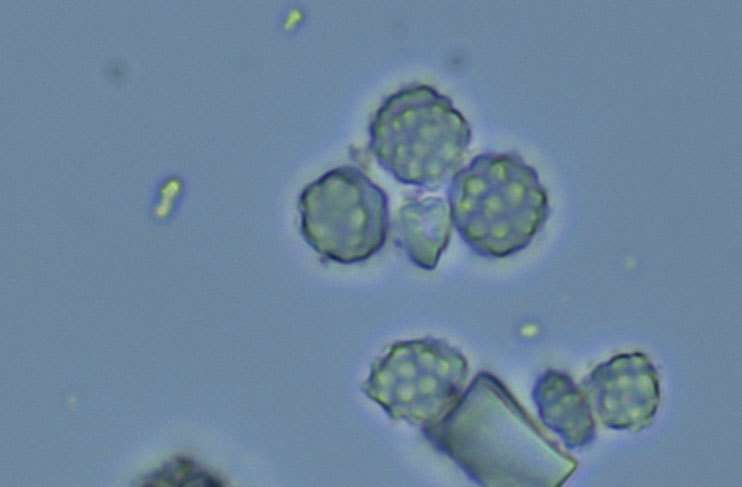Markers of diet and behaviour in chimpanzee dental calculus

Researchers from the Max Planck Institute for Evolutionary Anthropology in Leipzig, Germany, have identified new information about chimpanzee diets and diet-related behaviours, based on the record of plant remains preserved in the dental calculus (calcified dental plaque) on the teeth of deceased individuals. The research team found that the plant remains recovered from the dental calculus record of wild Taï Forest Chimpanzees (Côte d'Ivoire) broadly match the feeding data collected over the past twenty years as part of the Taï Chimpanzee Project. Moreover, the plant remains may provide information on behaviours important in chimpanzee life histories. These life-history traits are otherwise largely invisible in populations where it is impossible to directly observe the individuals.
As our closest living relatives, chimpanzees are one of the best analogues for some of our own ancient behaviours. However, our understanding of fundamental behaviours such as diet is limited by current methods, which require direct observation of feeding, or which provide only a small window into an individual's dietary behaviour during his lifetime.
"In our study we compare information from the composition of the animals' dental calculus with the long-term data from observing the behaviour of wild chimpanzees in the Taï National Park in Côte d'Ivoire", says first author Robert Power of the Max Planck Institute for Evolutionary Anthropology. To this aim the researchers analyzed dental calculus from 24 deceased Taï chimpanzees and – based on its mix of plant parts (phytoliths and starch particles) – reconstructed the animals' diet. Moreover, the researchers identified evidence of important events that happened during these individuals' lifetimes, weaning and the acquisition of tool-use skills like nut-cracking.
This study is one of the first to confirm that the dental calculus record can provide a substantial picture of diet. The results emphasize the relevance of the method for studying populations for which it is not possible to directly observe dietary behaviour, such as isolated and unhabituated primate groups, and even human ancestors. These results clarify how we can use dental calculus to reconstruct dietary ecology in primatology and human evolution. "What we can learn from this finding," states Power, "is that dental calculus is probably a more useful but also a more complicated reservoir of diet than originally thought."
More information: Dental calculus evidence of Taï Forest Chimpanzee plant consumption and life history transitions Scientific Reports, 19 October 2015, DOI: 10.1038/srep15161
Journal information: Scientific Reports
Provided by Max Planck Society



















